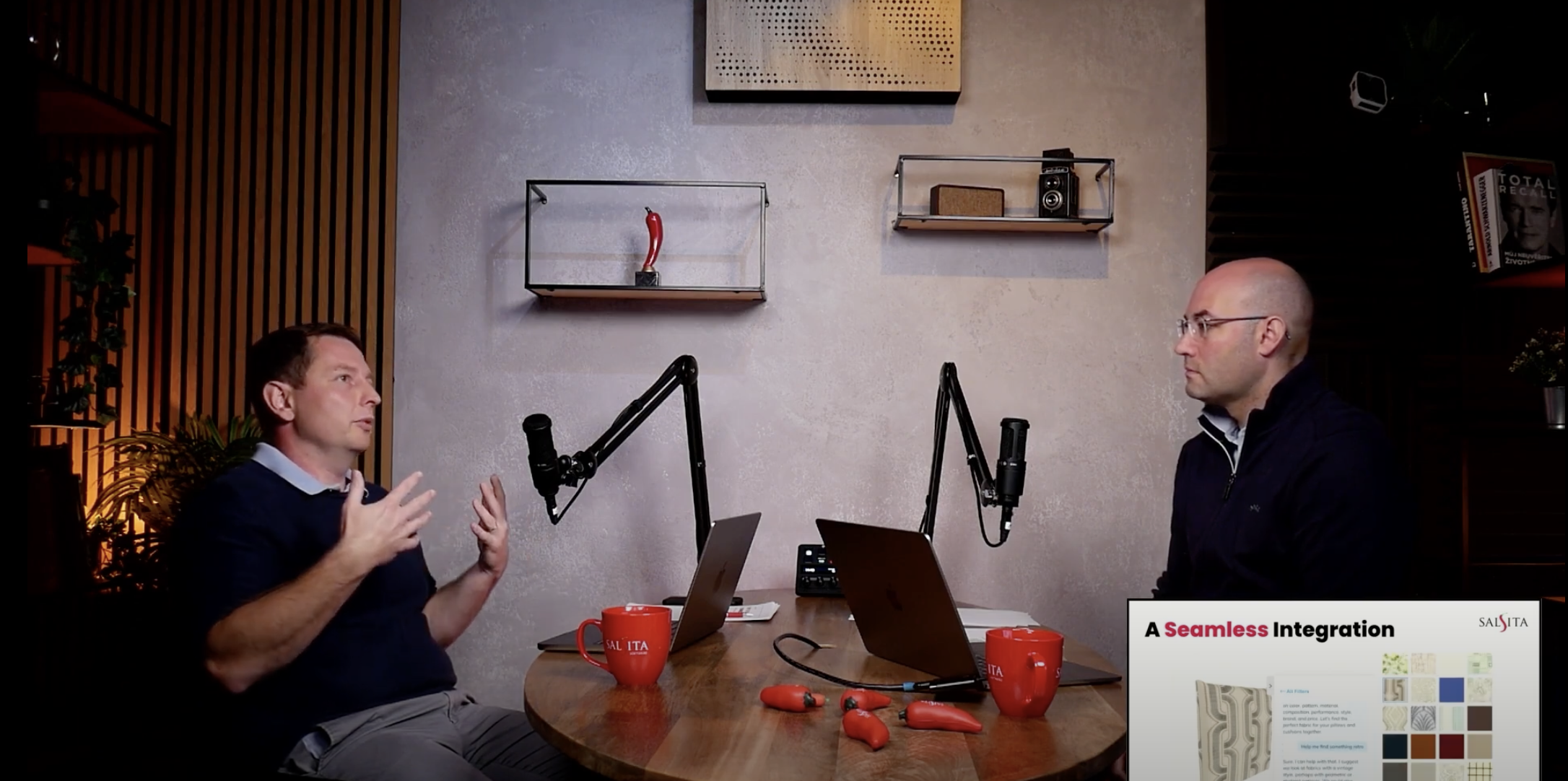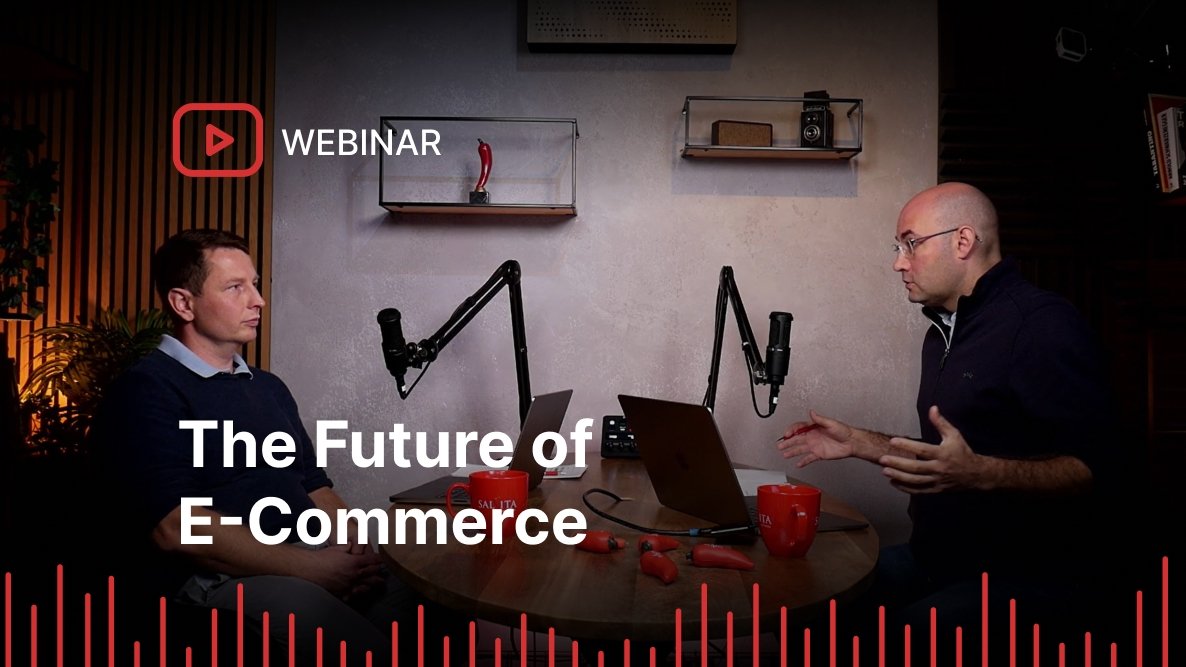Personalization in E-Commerce: How AI-Powered 3D Configurators Make It Happen
Learn from experts how AI-powered 3D configurators bring hyper-personalization to e-commerce, helping brands meet rising customer expectations and boost sales.

In e-commerce today, personalization isn’t just a perk — it’s an expectation. Shoppers want products tailored to their unique preferences, and many are willing to share data to make it happen. But as hyper-personalization becomes essential, how can brands keep pace?
In this article, Anthony Temperante, VP of Sales & Marketing at Salsita, and Jiří Staniševský, Salsita’s CTO, share insights into how AI-powered 3D configurators empower brands to deliver seamless, personalized experiences that build loyalty and boost sales.
For more insights, you can also watch our on-demand webinar, The Future of E-Commerce and AI-Powered 3D Configurators, where they share actionable tips.
Hyper-Personalization in E-commerce
Hyper-personalization is a must-have for e-commerce brands. Stats show that 83% of consumers are willing to share their data to create a more personalized experience, while 71% feel frustrated when a shopping experience is impersonal. This shift isn’t new, but it has accelerated for two main reasons:
- Advances in Technology: It’s not just about having faster phones. Powerful new tools, like advanced web browsers and 3D modeling software, are making it possible to deliver real-time customization right in the browser.
- Changing Customer Expectations: Customers now want products they can personalize instantly, from color to size and style. They’re looking for an experience that feels unique to them, right from the start.
Brands that embrace this shift are setting themselves up to connect with customers in a way that builds loyalty and drives sales.
How 3D Configurators Make Personalization Possible Online
Personalization has always been a part of in-store shopping. But now, with 3D technology, configurators are bringing that same tailored experience to online shopping.
Customers can view products in full 3D detail—rotating, zooming in, adjusting dimensions, and seeing every change in real time. There’s no need for special apps; it all works right in their browser, making it as simple as browsing any other site. This gives customers a showroom-like experience directly from their devices, allowing them to personalize products in a way that feels natural and engaging.
“This brings high-quality, real-time configuration and visualization to everyone through their web browser—right in their pocket.” — Jiří Staniševský, CTO, Salsita.
What Happens to Brands That Don’t Offer Hyper-Personalization Online
Brands that don’t keep up with hyper-personalization will fall behind and face challenges like:
- Lower Quality Leads: customers may not fully understand the product and aren’t as invested. Teams end up spending time with customers who aren’t serious about buying or don’t know what they want, while this time could be better spent on qualified leads.
- Longer Sales Cycles: back-and-forth emails, phone calls, and extra work for sales teams, who must send product details, answer customization questions, and create proposals.
- Higher Cart Abandonment: a customer who is unsure about the size or color of a product will just give up if they can’t see it in real time. This leads to lost sales and a lot of manual follow-up work for teams, with little success.
“ I think there's one key thing that can help solve this right now. And that's with 3D configurators.” — Anthony Temperante, VP Sales & Marketing, Salsita.

How AI-Powered 3D Configurators Take Hyper-Personalization to the Next Level
“We are standing on the edge of another breakthrough, and that is Conversational UI.” — Jiří Staniševský, CTO, Salsita.
We’re entering a new era of technology, shifting from basic graphical interfaces to Conversational UI. This transformation allows brands to offer an even more personalized shopping experience. With AI-powered 3D configurators, customers can interact with an AI design or product assistant that guides them in real time.
Unlike traditional chatbots that often redirect users to FAQ pages, these AI assistants do much more. They don’t just answer questions—they actively listen, understand preferences, and respond in a natural, conversational way. Acting like an in-store consultant, the AI assistant "speaks the customer’s language," making personalized product recommendations and adjustments as they browse.
“Now it's a “wow” factor, but soon it will be a must have. Because you will not be able to compete.” — Jiří Staniševský, CTO, Salsita.
Future-Proof Your E-Commerce Now
With the demand for hyper-personalization rising, staying competitive means adapting to these changes. As Anthony, our VP of Sales and Marketing, shared, “The positioning of e-commerce brands is changing. If a customer wants a product now, and they want it the way it should look and feel, then it means e-commerce brands need to be set up for that success.”
Want to learn more about how AI-powered 3D configurators can help you deliver that personalized experience? Watch our on-demand webinar to explore:
- How AI-powered 3D configurators work
- Key steps to deploy one for your e-commerce
- Live demo showcasing how brands use them to increase sales and enhance the customer experience


